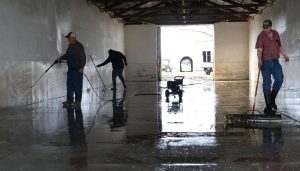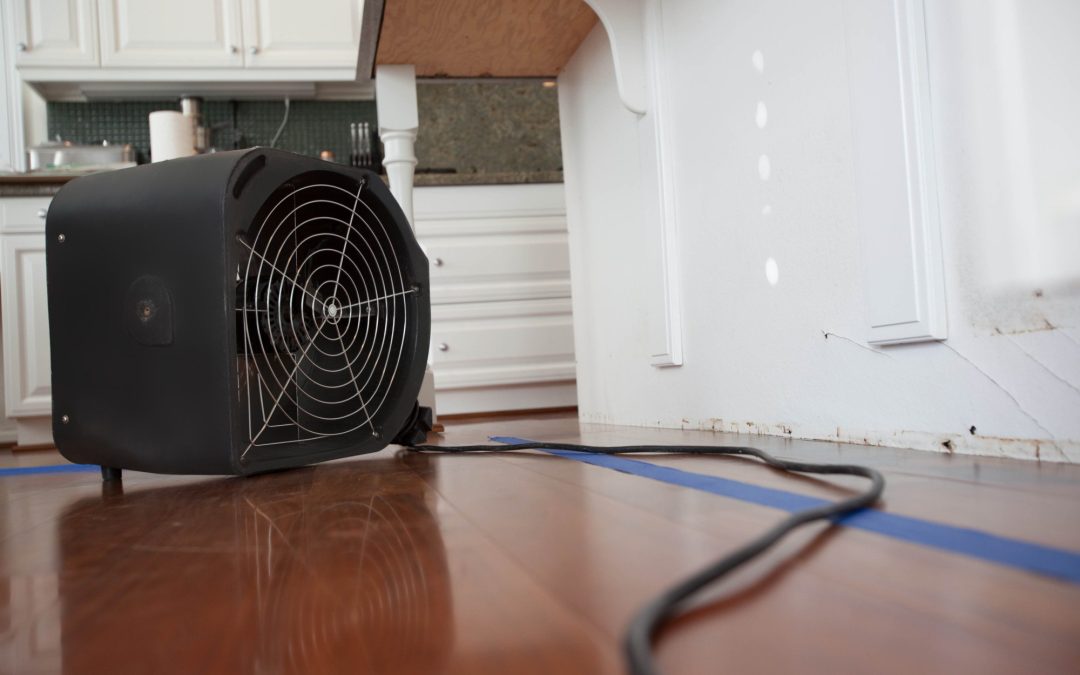Signs and Symptoms of Water Damage in Your Home
Water damage can wreak havoc on your home, causing structural issues, mold growth, and costly repairs if left unchecked. While some water damage is visible and easily identifiable, other types remain hidden, lurking beneath the surface until they manifest into more significant problems. Recognizing the signs and symptoms of hidden water damage is crucial for homeowners to protect their investment and prevent long-term damage. In this comprehensive guide, we’ll explore the various indicators of hidden water damage in your home, along with tips for detection and prevention.
Musty Odors
Musty odors are like nature’s whisper, hinting at the presence of hidden water damage within your home. These scents, reminiscent of damp earth and forgotten corners, often signal the secret growth of mold and mildew due to excessive moisture. It’s as if your home is keeping a mysterious secret behind walls, under floors, or in the quiet recesses of basements and crawl spaces. While these odors may seem elusive at first, they serve as gentle reminders that further exploration is needed. Swiftly uncovering and addressing the source of these mysterious aromas is key to preventing extensive damage and safeguarding against the potential health hazards posed by mold and mildew.
Potential Causes of Musty Odors
- Mold and Mildew Growth: Excess moisture from water damage creates the ideal environment for mold and mildew to thrive, leading to the development of musty odors.
- Damp or Wet Materials: Water-soaked materials such as carpets, upholstery, drywall, and insulation can emit musty odors as they become saturated with moisture.
- Poor Ventilation: Inadequate ventilation in areas prone to moisture accumulation, such as bathrooms, kitchens, and basements, can trap humidity and contribute to musty odors.
- Hidden Water Damage: Water damage hidden behind walls, under flooring, or in crawl spaces can go unnoticed for extended periods, allowing mold and mildew to proliferate and produce musty odors.
- Standing Water: Standing water from leaks, floods, or plumbing issues can stagnate and emit unpleasant odors as it becomes contaminated with bacteria and organic matter.
- Wet Building Materials: Water infiltration into building materials such as wood, drywall, and insulation can lead to deterioration and decomposition, resulting in musty odors.
- Saturated Carpet Padding: Carpet padding that becomes soaked with water and remains wet for an extended period can develop musty odors due to mold and mildew growth.
- Poorly Maintained HVAC Systems: Dirty or clogged air ducts, filters, and HVAC components can harbor moisture and organic matter, contributing to musty odors circulating throughout the home.
- Sewer or Drain Backup: Sewer or drain backups can introduce foul-smelling odors associated with sewage and stagnant water into the home, resulting in musty odors.
- Humid Climate: Homes located in humid climates are more susceptible to musty odors, as high humidity levels can promote mold and mildew growth even in the absence of visible water damage.
Discoloration and Staining
Discoloration and staining are like silent storytellers, revealing the hidden narrative of water damage within your home. These visual cues, often appearing as subtle yellowish or brownish patches on walls, ceilings, or floors, offer glimpses into the presence of leaks or moisture intrusion. These marks may seem innocuous at first glance, but they speak volumes about the unseen battles being waged behind the scenes. Paying heed to these signs allows homeowners to embark on a detective’s quest, tracing the source of the stains and addressing underlying issues before they escalate into larger problems. By unraveling the mysteries of discoloration and staining, homeowners can restore their homes to their pristine glory, free from the shadows cast by water damage.
Possible Reasons for Staining and Discoloration
- Roof Leaks: Damaged or missing roof shingles, deteriorated flashing, or compromised roofing materials can lead to water infiltration and staining on ceilings and walls.
- Plumbing Leaks: Leaking pipes, fittings, or plumbing fixtures, such as faucets and toilets, can result in water stains on walls, floors, and ceilings.
- Appliance Malfunctions: Malfunctioning appliances, such as water heaters, washing machines, dishwashers, or refrigerators with water dispensers, may leak and cause staining and discoloration in surrounding areas.
- Window or Door Leaks: Improperly sealed windows or doors can allow water to seep indoors during rainstorms or from outdoor moisture, leading to staining and discoloration around window frames and doorways.
- Condensation: Excessive indoor humidity levels and poor ventilation can result in condensation buildup on walls, windows, and ceilings, leading to water stains and discoloration over time.
- Foundation Cracks: Cracks or gaps in the foundation walls or basement floors can allow groundwater to seep into the home, causing staining and discoloration in basement areas.
- Clogged Gutters and Downspouts: Clogged gutters and downspouts can cause water to overflow and seep into the exterior walls and foundation of the home, resulting in staining and discoloration on exterior surfaces.
- Sump Pump Failure: A malfunctioning sump pump or inadequate drainage system in the basement can lead to water accumulation and staining on basement walls and floors.
- Exterior Water Intrusion: Exterior factors such as heavy rainfall, flooding, or landscaping issues can contribute to water intrusion through cracks in the exterior walls or foundation, causing staining and discoloration indoors.
- High Humidity Levels: Persistent high humidity levels in bathrooms, kitchens, or poorly ventilated areas can lead to moisture buildup and staining on walls, ceilings, and other surfaces.
Warped or Buckling Surfaces
Warped, buckled, or sagging surfaces such as walls, ceilings, or flooring can indicate water damage beneath the surface. Excess moisture can cause wood, drywall, and other building materials to swell, warp, or deform over time. Pay attention to changes in the texture or appearance of surfaces, including bulging walls, uneven floors, or sagging ceilings, as these may signal hidden water damage that requires immediate attention and repair.
Peeling or Bubbling Paint and Wallpaper
Peeling or bubbling paint and wallpaper are common signs of moisture infiltration and hidden water damage. Moisture seeping through walls can cause paint to bubble, crack, or peel away from the surface. Similarly, wallpaper may loosen or detach from walls due to exposure to moisture. Inspect walls and ceilings for signs of paint or wallpaper damage, especially in areas prone to water exposure or high humidity, such as bathrooms, kitchens, and laundry rooms.
Mold and Mildew Growth
Mold and mildew thrive in damp, humid environments and are often indicators of hidden water damage. Mold may appear as dark patches or fuzzy growth on walls, ceilings, or other surfaces exposed to moisture. Pay attention to musty odors, visible mold growth, or signs of water damage, as these may signal the presence of hidden moisture and the potential for mold infestation. Promptly addressing water leaks and controlling indoor humidity levels can help prevent mold growth and protect indoor air quality.

Identifying Hidden Water Damage
Damaged or Corroded Materials
Damaged or corroded building materials such as drywall, wood, or metal may indicate hidden water damage in your home. Look for signs of deterioration, decay, or rust on surfaces and fixtures, as these may result from prolonged exposure to moisture or water infiltration. Inspect areas around plumbing fixtures, appliances, and water supply lines for signs of corrosion or water-related damage, and address any issues promptly to prevent further deterioration and structural damage.
Identifying hidden water damage in your home is essential for maintaining its structural integrity, preventing mold growth, and avoiding costly repairs. By recognizing the signs and symptoms of hidden water damage, such as musty odors, discoloration, warped surfaces, peeling paint, mold growth, and damaged materials, homeowners can take proactive measures to address underlying issues and protect their homes from water-related damage. Regular inspections, prompt repairs, and maintenance of plumbing systems, roofing, and drainage systems are key to preventing hidden water damage and preserving the health and safety of your home and family.
Professional restoration services are the optimal choice for addressing water damage in your home. With expertise, specialized equipment, and adherence to industry standards, restoration professionals swiftly assess, mitigate, and restore water-damaged areas. Their comprehensive approach ensures thorough cleanup, minimizes risks, and expedites the recovery process, ultimately restoring your home to a safe and habitable condition.

